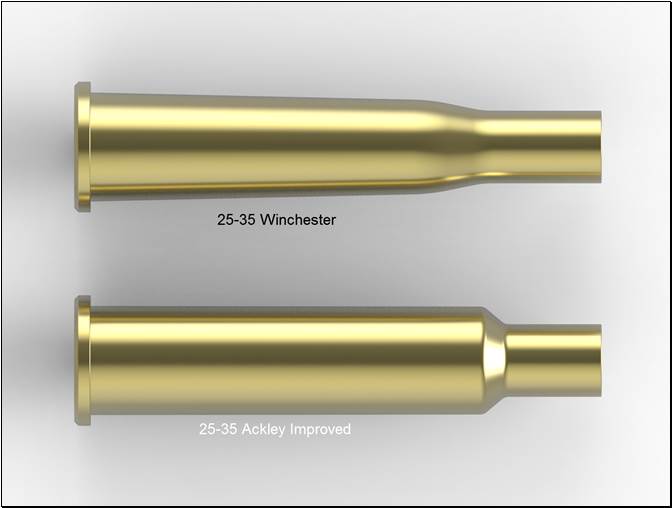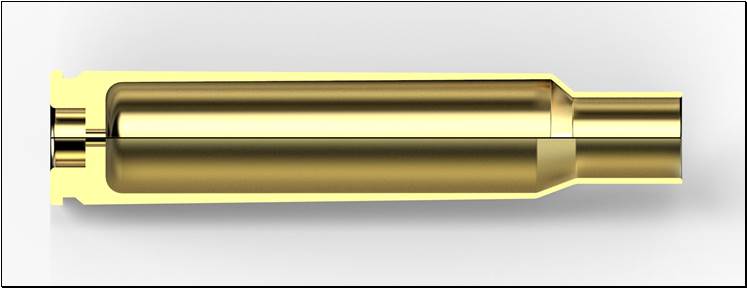
Thoughts about ‘Improving’
In the past many factory cartridges were converted by reducing body taper plus
creating a steeper shoulder for more powder space,
‘better’ powder burning and reduced
bolt thrust. Many can even use factory ammunition in the new chamber - a very
important aspect for P. O. Ackley . It is just that procedure we usually call
‘Improving’
.
Famous examples are the ACKLEY IMPROVED cartridges.

Another way to improve a factory case is extending the straightened body by
shortening the neck to a sufficient minimum. When you go that far you have to
think about assuring proper head space while fire forming. For that kind of
treatment the GIBBS cartridges are typical:
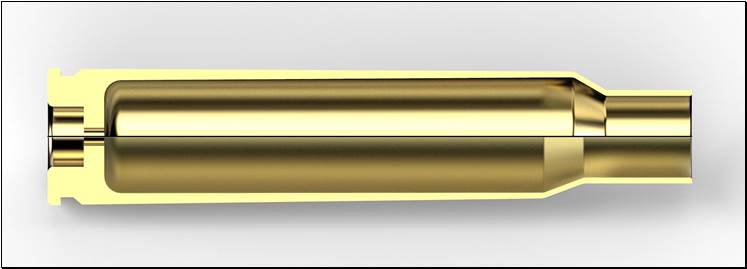
Some people are quite enthusiastic
about the performance or maybe too enthusiastic and some believe that little
real extra power is not worth the effort.
To get an impression of what you can expect when improving a case one should
look at some well known examples:
The 7x57Mauser is a typical
candidate for improving due to its long neck, long shoulder and old fashioned
body taper.
So let us see what the different ways of improving mean in real numbers as far
as powder space is concerned:
Calculations are based on identical case weight!
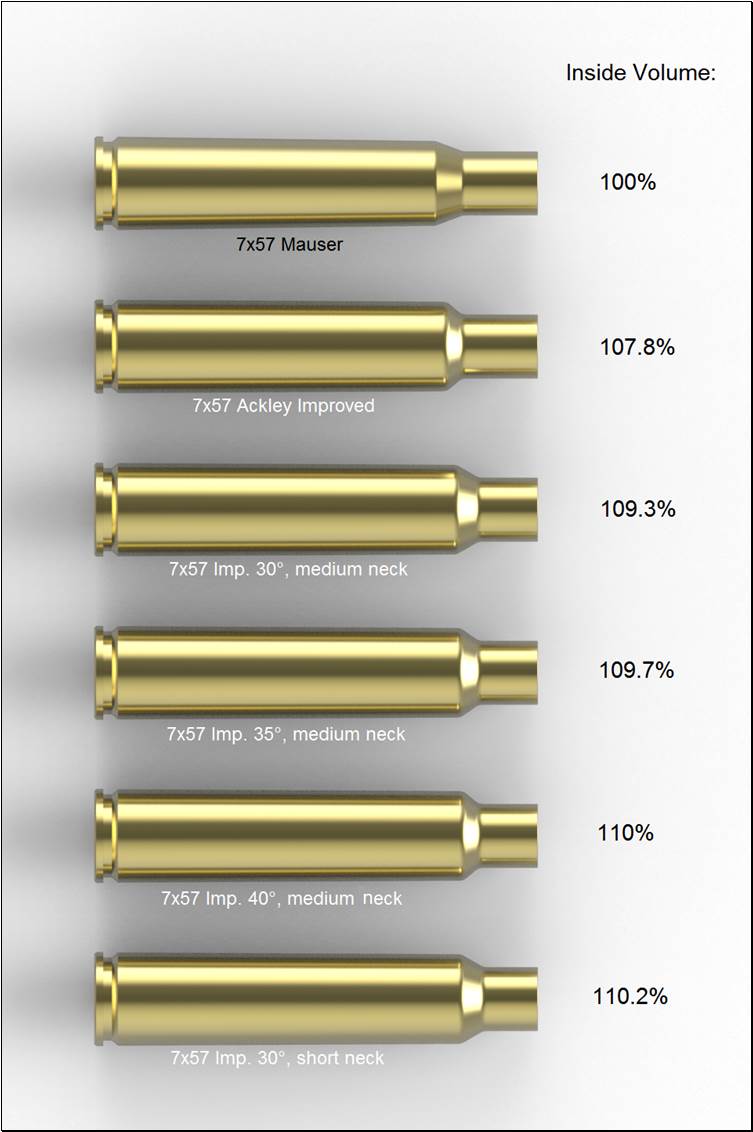
Using this example we can see that the most important step is reducing body
taper. Moving the shoulder comes second and increasing the shoulder angle comes
last. That would be different if the parent case has a very shallow shoulder
like the 300H&H.
If you combine a short neck and a shoulder angle of 40° you will get the largest
increase. That’s not very
surprising but would it be wise?
A long neck is good for accuracy. A neck length of one caliber or slightly more
seems to be a good compromise. A shoulder angle of 40° can lead to feeding
problems depending on actual proportions. The true benefit of a 40°shoulder for
powder burning – if any - can only be proved in comparison to a version with a
more gentle shoulder. It is reported that a 40°shoulder prevents the case from
stretching. This would be a real advantage.
When your parent case already has a rather cylindrical body and a large volume
your results will be more humble. See .30-06Springfield/.30-06Ackley Imp.:
Calculations are based on identical case weight!
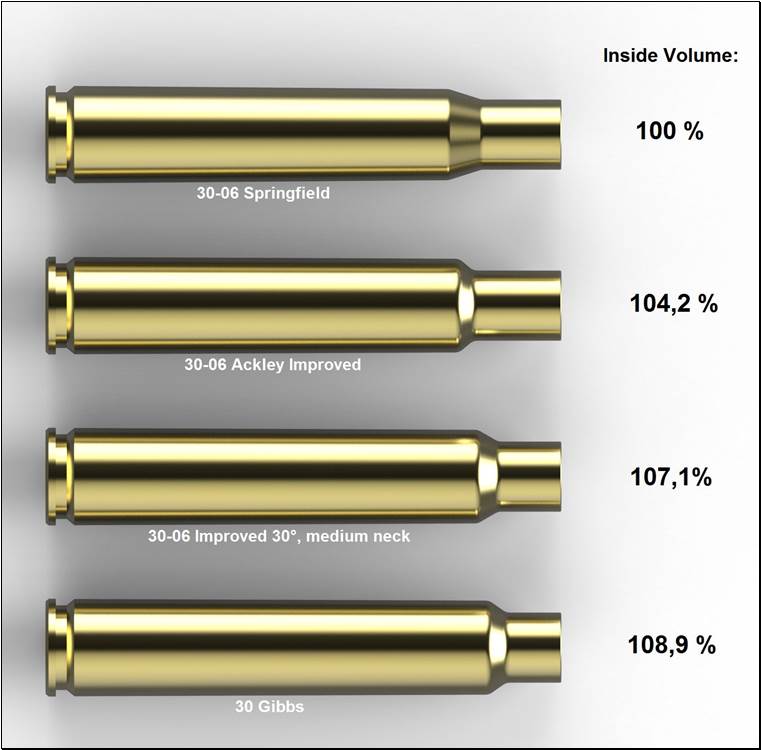
4.2 % more powder space of the .30-06Ackley Imp. is not very impressive. That
may be the reason why this round is discussed a lot.
Unfortunately
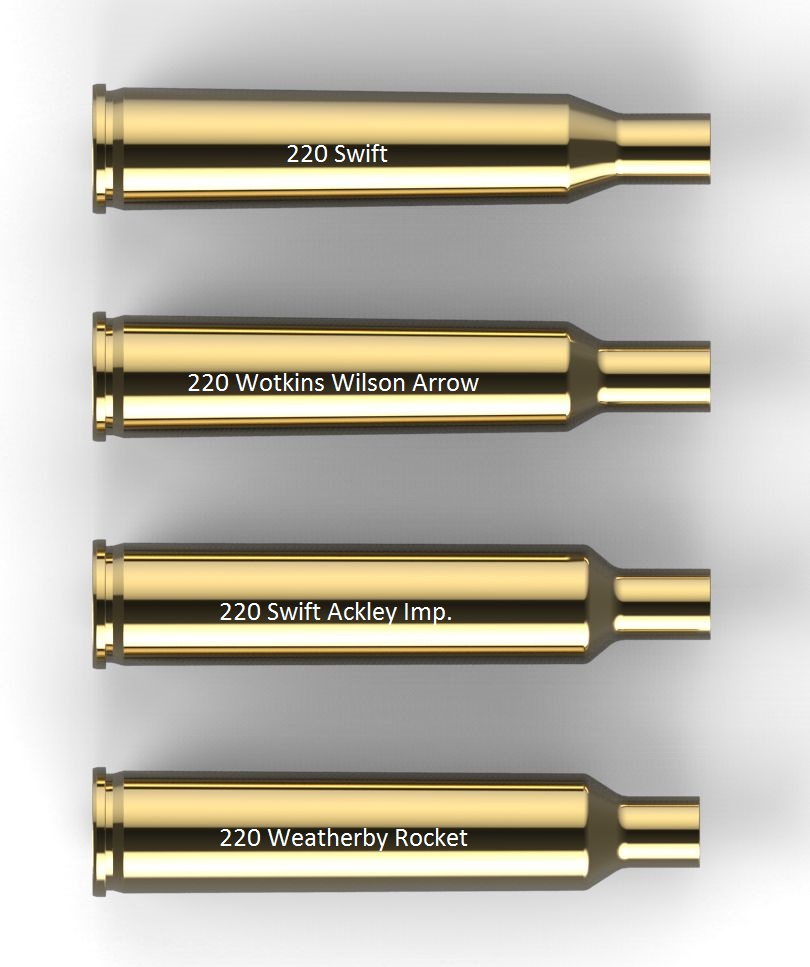
Some published performance data of improved cartridges are really breath taking.
As we do not know much about the circumstances of these measurements we should
always be sceptical.
Most recently introduced factory cartridges have minimum body taper and large
shoulder angles. Improving these cases will be real challenging.
Probably the most successful Improving:
25-35 Ackley Improved:
Volume Difference: 24%
